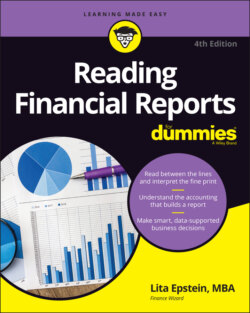Читать книгу Reading Financial Reports For Dummies - Lita Epstein - Страница 22
THE ROOTS OF FINANCIAL REPORTING
ОглавлениеAccounting practices can be traced back to the Renaissance, but financial reporting wasn't recognized as a necessity until centuries later.
1494: Italian monk Luca Pacioli became known as the “father of accounting” for his book Everything about Arithmetic, Geometry and Proportions, which includes a section on double-entry accounting (see Chapter 4). Pacioli warned his readers that an accountant shouldn't go to sleep at night until his debits equal his credits.
1700–1800: For-profit corporations started to appear in Europe as early as the 18th century. In 1800, only about 330 corporations operated in the U.S.
1800s: As public ownership of stock increased, regulators realized that some standardized distribution of information to investors was a priority. The New York Stock Exchange was the first to jump into the fray, and in 1853, it began requiring companies listed on the exchange to provide statements of shares outstanding and capital resources.
1929: Before the stock market crash, equity investing became a passion. People borrowed money to get into the market, paying higher and higher prices for stock. Sound familiar? Not too different from what occurred just before the 2000 crash of technology and Internet stocks.
1933–1934: Congress created the SEC and gave it authority to develop financial accounting and reporting standards and rules to deter companies from distributing misleading information.
1973: The Financial Accounting Standards Board (FASB) was created to establish standards for financial accounting and reporting. The SEC recognized the generally accepted accounting principles (GAAP) as the official reporting standards for federal securities laws.
1984: The FASB formed the Emerging Issues Task Force, which keeps an eye on changes in business operations and sets standards before new practices become entrenched.
2002: The FASB began work with the International Accounting Standards Board (IASB) to converge international financial reporting systems.
Each department head usually receives a report from the top managers showing the department's expenses and revenue and whether it's meeting its budget. If the department's numbers vary significantly from the amount that was budgeted, the report indicates red flags. The department head usually needs to investigate the differences and report what the department is doing to correct any problems. Even if the difference is increased revenue (which can be good news), the manager needs to know why the discrepancy exists, because an error in the data input could have occurred.
Reports on inventory are critical, not only for managing the products on hand, but also for knowing when to order new inventory. I talk more about inventory controls and financial reporting in Chapter 14.
Tracking cash is vital to the day-to-day operations of any company. The frequency of a company's cash reporting depends on the volatility of its cash status — the more volatile the cash, the more likely the company needs frequent reporting to be sure that it has cash on hand to pay its bills. Some large firms actually provide cash reporting to their managers daily. I talk more about cash reporting in Chapters 15 and 16; Chapter 15 focuses on incoming cash, and Chapter 16 deals with outgoing cash.
